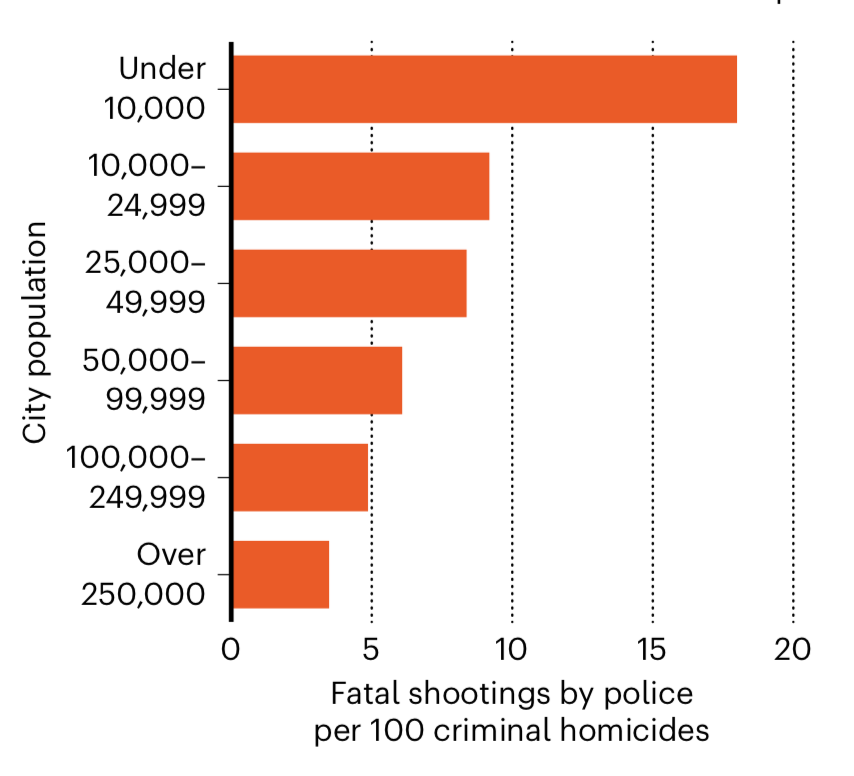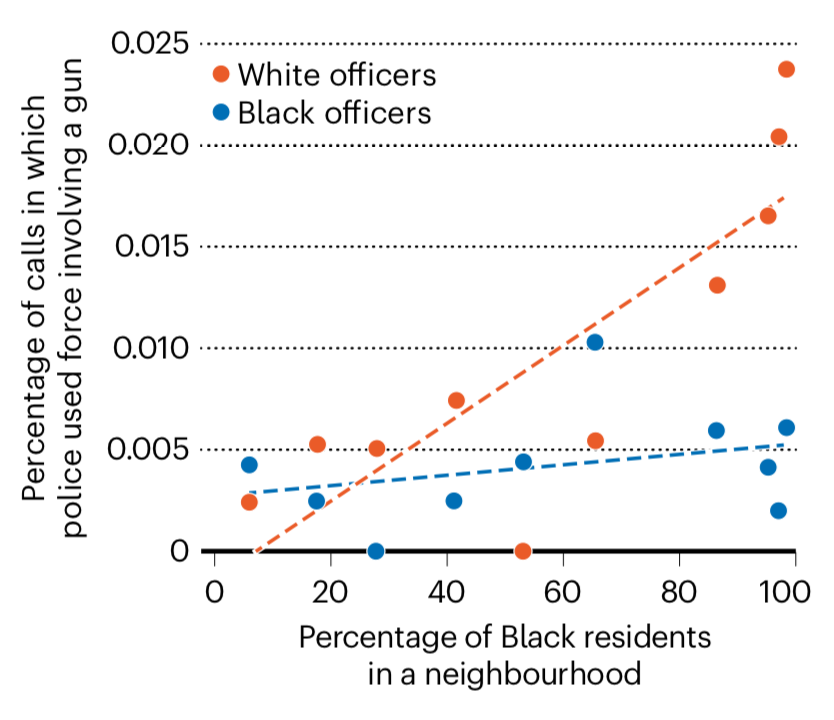Introduction
Police brutality, namely applied force by an officer to a civilian without a substantial reason, appears to be a pressing concern in the United States society. According to Peeples, “About 1,000 civilians are killed each year by law-enforcement officers in the United States” (22). However, it is essential to outline the context of harassment in relation to civilians, as this problem regards only the cases when there is no aggression towards the police. Consequently, the situations when the population resists the arrests and refuses to follow legal obligations are out of the focus at the moment. Therefore, the problem of police brutality is widely spread in the U.S., and it predominantly addresses the black population, leading to both physical and mental negative consequences.
The Scale of the Problem
Although the cases of harassment of police officers may seem to be rare, the reality is frequently opposite this assumption. Justin Nix, a criminologist at the University of Nebraska Ohama, states: “We have enough evidence that tells us that action needs to be taken. One thousand deaths a year does not have to be normal” (Peeples 22). Graph 1 illustrates that the issue is relevant not only for large cities but also for small towns. Moreover, the rate of police shootings is event lower in cities, comparing to town statistics. Therefore, it is undeniable that the problem regards a significant number of the U. S. population, and for this reason, it should be urgently addressed.

Addressing the Black Population
What causes more concern is the fact that predominantly, the violence is applied to the black population. A considerable number of cases prove the seriousness of this problem. As has been mentioned above, approximately a thousand civilians are killed by police officers every year. Peeples highlights: “By one estimate, Black men are 2.5 times more likely than white men to be killed by the police during their lifetime” (22). This data allows assuming that there is a connection between racial bias and law-enforcement violence.
In general, the author provides a range of statistical figures, and the research on the comparison between white and black officers using force may be especially illustrative. It enhances approximately 1.2 million emergency calls around the U. S. city. As it is demonstrated in Graph 2, white officers are more likely to apply guns while performing their duties than black ones. Furthermore, they tend to do it in relation to the residents of black areas, comparing to the cases of harassment towards white citizens.

The thesis about racial biases affecting police practice is proved by other studies as well. Alang et al. mention that historically, Black, Latin, and Native Americans have a prepossession of police brutality (765). Coates also addresses this issue and highlights that society tent to treat the black population with prejudices. The author claims: “Our triumphs can never redeem this. Perhaps our triumphs are not even the point. Perhaps struggle is all we have” (Coates). Therefore, such an attitude towards blacks is apparently connected with police brutality to them, and systematic racism leads to violence to them much more frequently, comparing to the white population.
Physical and Mental Consequences
It is evident that police brutality is associated with particular health risks of different levels of severeness. Apart from injuries, it may result in shootings, which occasionally are not substantial (Peeples). In addition, law-enforcement harassment causes significant mental consequences, which affect the lives of the victims. Alang et al. found the connection between police brutality and mistrust in other institutions, including medical ones (760). In case the population is feared to apply for medical help, this fact may lead to serious health problems in the long run, deteriorating the living standards and aggravating the current diseases. Alang et al. evaluate the concern as a pressing one and attempt to draw attention to it. This also causes racial inequities, as according to statistics, Black, Latin, and Native Americans are more likely to be victims of police violence. Consequently, racism biases in police practice contribute to the development of the same tendency in the sphere of delivering medical care, which is threatening for the health of the black population.
Conclusion
In conclusion, it can be stated that the problem of police brutality appears to be relevant and widely spread in the context of present-day developments, which is proved by a range of researches. It predominantly regards Black, Latin, and Native Americans, and the main reason for them is prejudice against this category of the population, shared by the police officers. This leads to applying harassment in their relationship without a substantial reason for it and causes a pressing social concern. Moreover, police brutality has a negative impact both on the physical and mental states of victims. Apart from injuries, they tend to have a mistrust of intuitions, especially medical ones. This fact may worsen the living standards of U.S. residents significantly in the long term. Thus, the necessity to address this issue urgently is evident.
Works Cited
Alang McAlpine, et al. “Police Brutality and Mistrust in Medical Institutions.” Journal of Racial and Ethnic Health Disparities, vol. 7, 2020 pp. 760-768.
Coates, Ta-Nehisi. “Letter to My Son.” The Atlantic, 2015. Web.
Peeples, Lynne. “Brutality and Racial Bias: What the Data Say.” Nature, vol. 583, 2020. Web.
